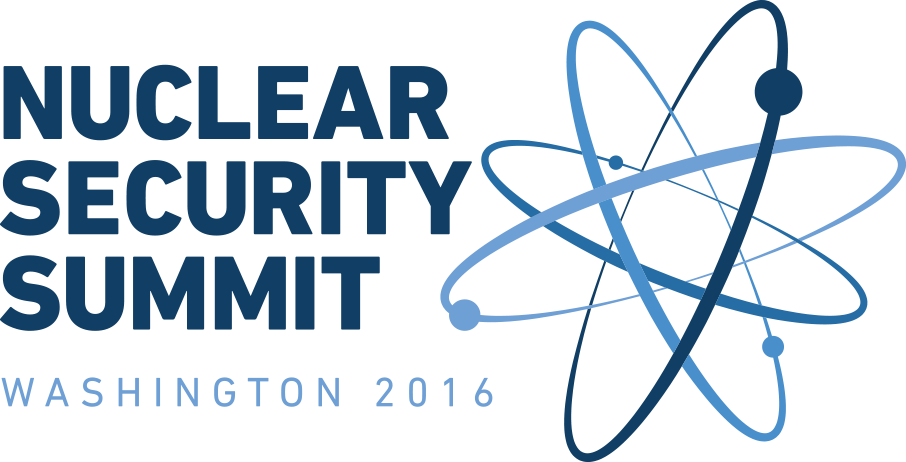Joint Statement on Maritime Supply Chain Security
/2016 Nuclear Security Summit
Maritime Supply Chain Security Joint Statement
Over the past decade, many countries have deployed radiation detection systems at their seaports as a key component of their national approach to combating nuclear and radiological smuggling. These systems have detected numerous nuclear and other radioactive materials out of regulatory control (MORC) - some that pose security risks and others that just pose risks to public health and safety, or are of regulatory concern(e.g. contaminated goods and orphan sources). Due to the complexity of the maritime system and the many stakeholders involved, it is clear that national, regional and international coordination in both the public and private sector is needed to secure this vector and enable the permanent removal of these materials from the maritime supply chain.
With this in mind, 15 countries, nine international organizations, three terminal operators, and several academic representatives participated in a workshop from 16-18 November 2015, co-sponsored by the United States and the United Kingdom, focused on promoting radiation detection in the maritime supply chain and developing enhanced measures to permanently remove materials found out of regulatory control. This workshop was in fulfillment of a commitment made at the 2014 Nuclear Security Summit in a joint statement on maritime supply chain security. Workshop participants acknowledged that detection systems are an important tool in a nation’s approach to locating and securing MORC and identified a set of best practices and recommendations.
Australia, Belgium, Canada, Germany, Georgia, Israel, Lithuania, Kazakhstan, Mexico, the Netherlands, Spain, the United Arab Emirates, the United Kingdom and the United States endorse the following best practices and recommendations identified at the November 2015 workshop.
Best Practices
Nations with detection programs have agreed to continue to share technical advice, lessons learned and best practices with one another and with those nations seeking to implement and sustain detection systems. Specific examples of best practices include:
- Plan for long-term sustainability of systems early in the process of developing and deploying radiation detection programs;
- Establish a comprehensive "end-to-end" regulatory framework that provides the necessary framework and authorities to all stakeholders involved in the detection, notification and response to materials found out of regulatory control;
- Implement and institutionalize regular training and adaptive exercises that address evolving threats, operational challenges and security strategies of detection systems to verify that roles and responsibilities are clearly understood and that all relevant stakeholders maintain a state of readiness;
- Take appropriate national-level measures at the material’s origin, in accordance with the IAEA Code of Conduct on Radioactive Sources, to ensure that radiological materials are controlled at the point of origin and prevented from entering the maritime supply chain.
- Take appropriate measures to ensure that detected nuclear other radioactive materials are placed back under control in either the country responsible for the detection eventor the country of material origin, as appropriate; and
- Report incidents involving MORC to the International Atomic Energy Agency (IAEA) Incident and Trafficking Database (ITDB) in a timely manner and seek other formal and informal mechanisms to share information on detections, trends, and challenges in addressing MORC with regional and international partners.
Recommendations:
- Seek opportunities and mechanisms to enhance communication between public and private stakeholders regarding the responsibilities and obligations associated with the removal of MORC from the maritime supply chain and to ensure feedback mechanisms for all parties in the ultimate resolution of MORC cases, as appropriate;Develop technical and operational solutions to reduce alarms from innocent, naturally occurring radioactive material (“NORM”) to protect commerce and to focus resources on detecting materials of concern;
- Request that the International Atomic Energy Agency (IAEA) continue to study technical and operational issues related to detection operations through cooperative research projects and other mechanisms as appropriate;
- Request that INTERPOL continue and enhance current efforts to ensure that threat information flows from law enforcement to front line officers (i.e. Customs and Border Protection) involved in detection operations;
- Request that the World Customs Organization (WCO) expand its efforts to deploy a common communication platform between customs organisations, which could be leveraged to facilitate timely information sharing in member states on detections, trends and challenges in addressing MORC; and
- Investigate whether the WCO or other appropriate organisations could expand their efforts to facilitate information sharing that goes beyond customs organisations to regulators or other applicable organisations in order to allow all those organisations involved in the detection and removal of MORC to share timely information, ensure that material is permanently removed from the supply chain and correctly disposed of.
The United States and the United Kingdom will document and share these and other best practices and recommendations with the international community.

